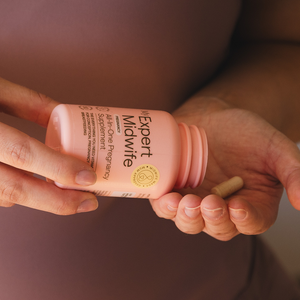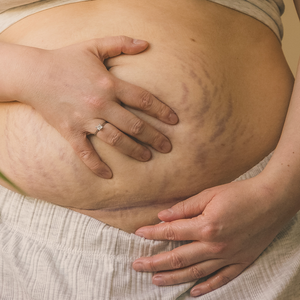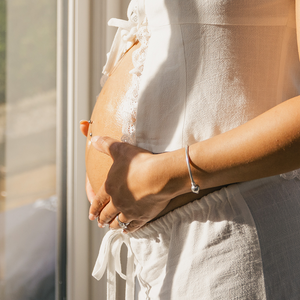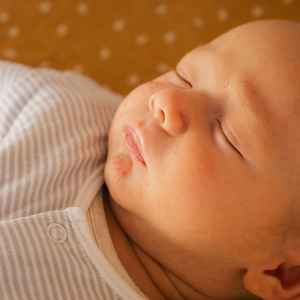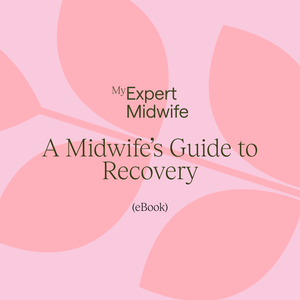You may have experienced or heard of other pregnant women complaining of hip pain, lower back ache and/or pain to the very bottom of the abdomen, where the pubic bone is. Pain and discomfort around this area is known as pelvic girdle pain (PGP) or symphysis pubis dysfunction (SPD) – which are different names that refer to the same group of symptoms - and happens to approximately 50% of all pregnant women. Symptoms can start as early as 16-18 weeks and tend to increase in severity as the pregnancy progresses.
What is the pelvis?
The pelvis is the bony structure that connects your legs to your spine and to which some very important muscles attach. It is shaped a bit like a basin, containing and protecting your reproductive organs and part of your bowel, and is made up of several different bones and cartilage. Your left and right hips meet at the front and are joined together by a thick band of cartilage called the symphysis pubis.
What can cause pelvic pain & discomfort in pregnancy?
Several factors can cause pelvic pain in pregnancy. In most cases, hormonal and postural changes are responsible, but causes can also include previous trauma to the pelvis, genetic factors or degenerative illnesses.
The hormone relaxin increases in pregnancy, causing ligaments to relax and some cartilage to soften. This helps the pelvis to make room for your growing baby as the pregnancy progresses and allows extra movement and space in the pelvis for labour.
Your centre of gravity changes as your ‘bump’ grows, tilting your pelvis forward and, often, increasing the curvature of your lower back (this is known as lordosis), which causes stress to the surrounding structures. Although the muscles around the pelvis help to improve your stability, sometimes this is not sufficient and pain occurs.
Towards later pregnancy, both of the above factors are increased: raised levels of relaxin further increase the laxity of your pelvic ligaments and the softness of your symphysis pubis, whilst the increased ‘front load’ of your pregnant womb further challenge your posture and centre of gravity. Unsurprisingly, when both of these elements come together, they result in a worsening of your symptoms.
Women who have had previous pregnancies, who have a history of low back pain or pelvic girdle pain, whose work is physically demanding or who have suffered previous trauma to their pelvis or back are at increased risk of experiencing PGP during their pregnancy.
What are the symptoms?
Symptoms of PGP/SPD can be different and vary hugely in severity among women, with approximately 25% of women who suffer from it reporting severe pain and up to 8% attributing severe disability to the pain.
Women with PGP often describe experiencing stabbing and/or shooting pains, burning sensations or a dull pain or ache. These sensations can be felt anywhere around the pelvis, deep inside (sometimes leading women to think the pain is in their vagina, perineum or back passage), low down in the abdomen or down the thighs. For some women, the discomfort can be quite limiting.
The most common symptoms of PGP include:
- Pain when standing on one leg – eg. having difficulties going up/down stairs and putting trousers on whilst standing
- Difficulty getting in and out of the car, the bath or bed
- Discomfort, pain and/or difficulty during sleep or when turning in bed
- Inability or difficulty when walking, especially long walks and/or at quick pace
- Pain/discomfort during intercourse
- Difficulty sitting and/or standing for prolonged periods
- Pain shooting down one or both thighs
- Clicking or grinding around the pelvis
Occasionally, when the pain is felt in the lower abdomen, women may suspect a urinary tract infection (UTI). Although a urine test should certainly be done to exclude this, an assessment by your midwife or GP may help reach a diagnosis of PGP.
Helping you manage your symptoms
The single most important thing you can do if you suffer with PGP is to seek prompt assessment by an obstetric physiotherapist, as this is most likely to result in effective treatment and could resolve your complaints within only a couple of consultations. Ask your midwife or GP to refer you to an obstetric physiotherapist as soon as possible – or, alternatively, see one privately.
PGP can be treated safely at any stage of pregnancy – and after the birth – and is best done so as soon as symptoms occur.
The following tips could also help to manage your symptoms and keep you more comfortable:
- Keep your knees together when turning in bed and getting in and out of the car or bath
- Find the right balance between keeping active and getting plenty of rest
- Support your ‘bump’, hips, knees and back with plenty of pillows when you are in bed. A pillow between the knees can make a huge difference
- Sit down to put your shoes on and get dressed/undressed so you avoid balancing on one leg
- When standing, put equal weight on both legs and avoid sticking your bottom out - try lightly engaging your core and pelvic floor muscles so that your tailbone tucks in a little
- Avoid: - sitting for too long, with your legs crossed, on the floor or in twisted positions; lifting heavy objects; balancing a toddler on one hip; or going up/down too many stairs
Summary
Pelvic girdle pain (PGP) or symphysis pubis dysfunction (SPD) is a common and, sometimes, debilitating condition of pregnancy with an array of different symptoms and several potential causes. Prompt identification and treatment by a specialist physiotherapist is key and, therefore, strongly recommended. Several self-help measures may also support women in managing their symptoms and improving their comfort.
